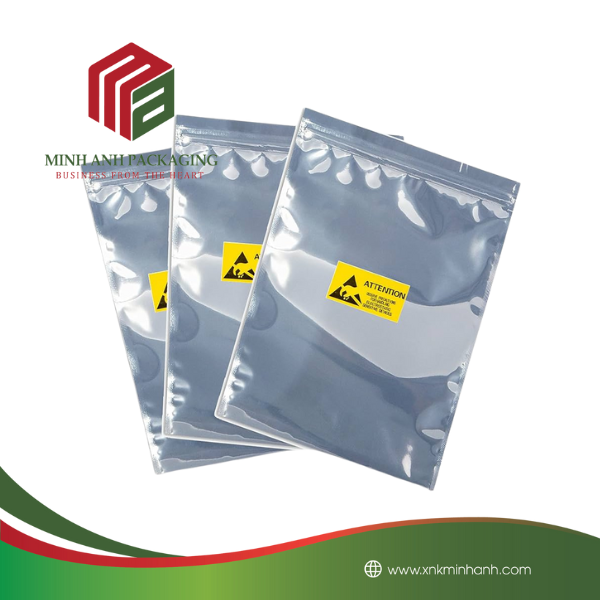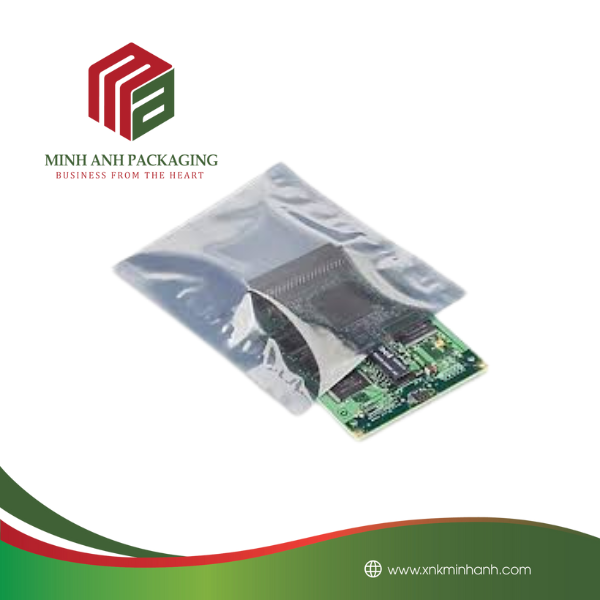How Anti-Static Bags Protect Sensitive Components
The construction of anti-static bags is key to their effectiveness. These bags are typically made from a combination of materials that have been specifically chosen for their anti-static properties. One common material used in the production of anti-static bags is polyethylene, which is infused with additives that help to reduce the buildup of static electricity. Additionally, some anti-static bags incorporate a layer of metal or carbon to further enhance their ability to dissipate static charges.
Anti-static bags are an essential tool in the protection of sensitive electronic components. These specialized bags are designed to prevent electrostatic discharge (ESD) from damaging delicate electronics during storage and transportation. By understanding how anti-static bags work and their importance in the electronics industry, we can appreciate the crucial role they play in safeguarding sensitive components.
Electrostatic discharge occurs when two objects with different electrical charges come into contact or close proximity, resulting in a sudden flow of electricity between them. This can be particularly damaging to electronic components, as even a small discharge of static electricity can cause irreparable harm. Anti-static bags are specifically engineered to prevent this type of damage by dissipating any built-up static electricity and shielding the contents from external sources of ESD.

The construction of anti-static bags is key to their effectiveness. These bags are typically made from a combination of materials that have been specifically chosen for their anti-static properties. One common material used in the production of anti-static bags is polyethylene, which is infused with additives that help to reduce the buildup of static electricity. Additionally, some anti-static bags incorporate a layer of metal or carbon to further enhance their ability to dissipate static charges.
In addition to their specialized construction, anti-static bags are also designed with features that further protect sensitive components. Many anti-static bags are puncture-resistant, ensuring that the contents remain shielded from physical damage during handling and transportation. Additionally, these bags often feature a resealable closure, allowing components to be easily accessed while maintaining a protective environment.
The importance of anti-static bags in the electronics industry cannot be overstated. As electronic components continue to shrink in size and increase in complexity, they become even more susceptible to damage from electrostatic discharge. Without proper protection, these components can experience failures or malfunctions, leading to costly repercussions for manufacturers and end users alike.

When sensitive components are not properly safeguarded, the consequences can be severe. For example, integrated circuits, microprocessors, and other semiconductor devices can be rendered inoperable by ESD, resulting in costly production delays and potential product recalls. In critical applications such as medical devices, aerospace systems, and automotive electronics, the failure of a single component due to ESD can have far-reaching implications for safety and reliability.
To mitigate these risks, manufacturers and distributors rely on anti-static bags to provide a secure environment for sensitive electronic components. Whether storing inventory in a warehouse or shipping products across the globe, the use of anti-static bags is a critical step in ensuring the integrity of electronic components throughout their lifecycle.
In addition to their use in the electronics industry, anti-static bags also play a vital role in other sectors where ESD protection is essential. For example, the aerospace and defense industries rely on anti-static packaging to safeguard critical electronic systems used in aircraft, satellites, and military equipment. Similarly, the medical device industry utilizes anti-static bags to protect sensitive electronic components within devices such as pacemakers, defibrillators, and diagnostic equipment.

Furthermore, the use of anti-static bags extends beyond the manufacturing and transportation phases of electronic components. Many organizations also utilize these bags during assembly and testing processes to minimize the risk of ESD-related damage. By incorporating anti-static bags into their operational procedures, companies can uphold strict quality standards and ensure the reliability of their products.
In conclusion, anti-static bags are an indispensable tool for protecting sensitive electronic components from the harmful effects of electrostatic discharge. Through their specialized construction and features, these bags provide a secure environment that mitigates the risk of ESD-related damage throughout the lifecycle of electronic components. As technology continues to advance and electronic devices become increasingly intricate, the importance of anti-static bags in preserving the integrity of sensitive components remains paramount in the electronics industry and beyond.
Hãy là người đầu tiên nhận xét “How Anti-Static Bags Protect Sensitive Components” Hủy
Sản phẩm tương tự
Tin Tức Bao Bì
Tin Tức Bao Bì
Tin Tức Bao Bì
Tin Tức Bao Bì













Đánh giá
Chưa có đánh giá nào.